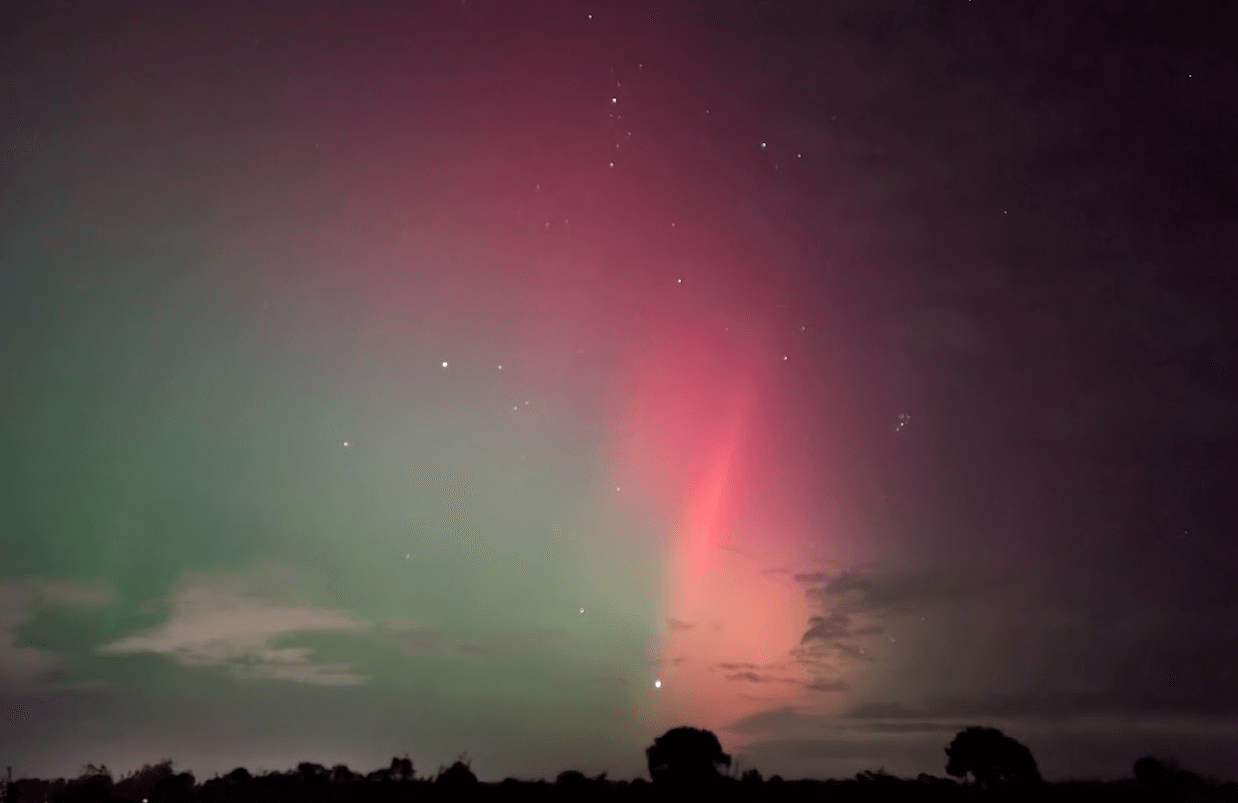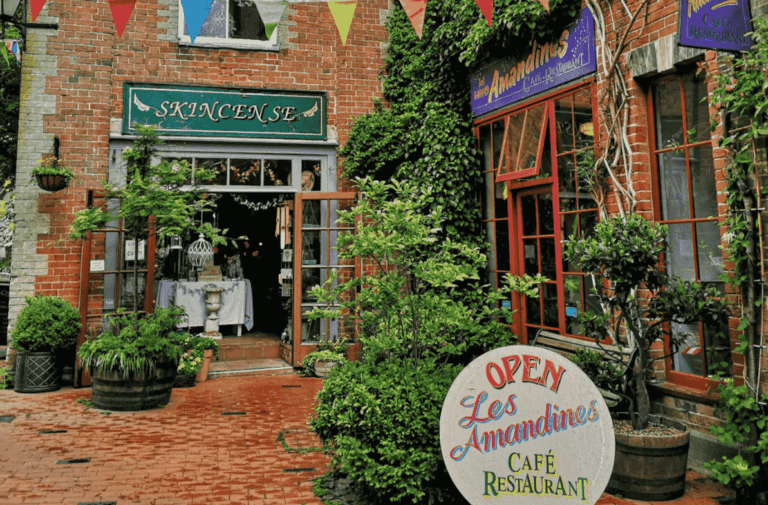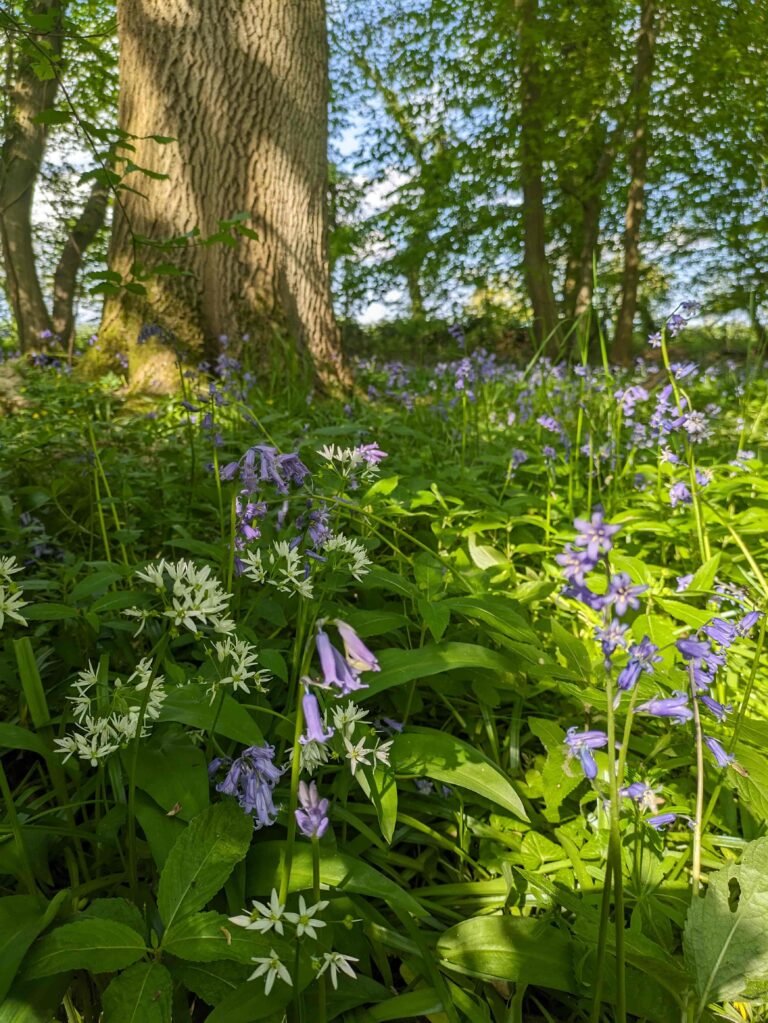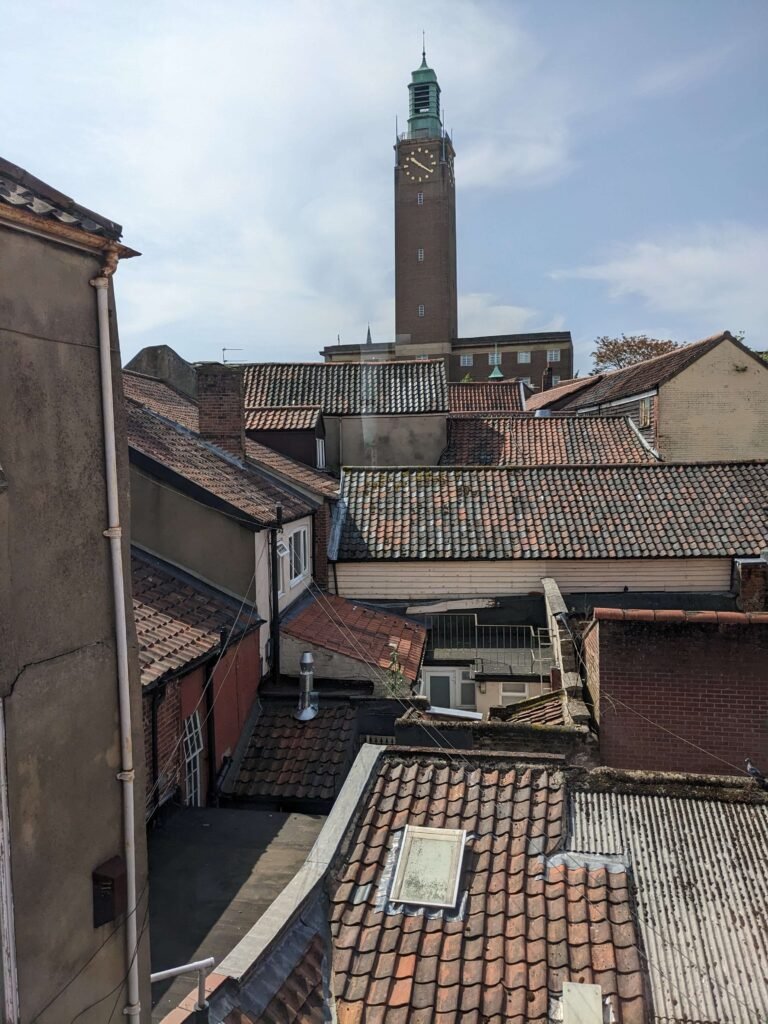Places to Stargaze and See the Sky at Night in Norfolk
Norfolk does night skies properly. Wide horizons, low population density, and stretches of protected coast and heathland mean this county has some of the clearest skies in England. Two sites are officially recognised as Dark Sky Discovery Sites (DSDS), and the Broads also protects its night environment, giving you plenty of options whether you’re chasing meteor showers, hoping to glimpse the Northern Lights, or just want to watch the Milky Way arc across the heavens.
As a team that has lived here for decades, we’ve combined our own experience of watching the Norfolk skies at night with trusted sources like the CPRE’s dark sky maps, RSPB reserves, and local astronomy groups to guide you to the very best places in Norfolk for stargazing.
Stargazing in Norfolk: planning tips before you go
- Pick a moonless window. A bright moon will wash out fainter meteors and nebulae.
- Check cloud cover and dress warmly. It’s always colder than you think at 1am by the sea.
- Use red light. A red torch preserves night vision and is kinder to wildlife.
- Choose darker places. CPRE’s light-pollution maps are useful for scouting.
- Know the rules. Many coastal car parks are free after 6pm, but overnighting is not permitted. Always check signage.
Top stargazing locations and dark sky sites in Norfolk
Norfolk’s mix of wide beaches, open heathland, and protected reserves makes it one of the best counties in England for stargazing. Below we’ve gathered the most reliable dark sky sites and favourite local spots. These range from officially recognised Dark Sky Discovery Sites to quiet corners known mainly by those who live here. Each one offers a different way to experience the night sky.
Kelling Heath Dark Sky Discovery Site (stargazing near Weybourne)
Kelling Heath is Norfolk’s flagship site for astronomy. Recognised as a Dark Sky Discovery Site, it also hosts the LAS Equinox Sky Camp, the UK’s largest annual gathering of amateur astronomers. The skies here are proven to be among the clearest in East Anglia, making it a reliable choice for major showers like the Perseids or Geminids.
For us, there’s a personal connection. We used to holiday at Kelling Heath when younger, and return trips over the years have shown how much the facilities have improved, while the night skies have remained just as impressive. Better pathways, lighting controls, and visitor amenities now make stargazing here more accessible than ever.
Why it’s good: DSDS status, wide horizons, long-standing astronomy community presence.
Practical: On-site parking; follow park guidance after dark.
Wiveton Downs Dark Sky Discovery Site (south of Blakeney)
A quieter alternative with just as much authority, Wiveton Downs is the county’s second Dark Sky Discovery Site. On clear nights, the Downs deliver spectacular Milky Way views, with constellations visible to the naked eye that you won’t see in built-up parts of Norfolk.
We’ve walked here many times during the day, and you can feel why it’s special at night too – the heathland ridge gives elevated, open horizons. While there are no facilities on site, those wanting sustenance before or after a session can head to the Wiveton Bell, the village pub just down the road.
Why it’s good: DSDS recognition, elevated position, quiet surroundings.
Practical: Small car park, no facilities on site.
RSPB Titchwell Marsh stargazing spot
Better known for birdwatching, but not to be overlooked at night. The raised embankments here provide wide 360° horizons, and the Norfolk Coast Partnership recognises Titchwell as one of the county’s best stargazing reserves.
Our own visits here have mainly been in daylight, but the benefit of that big sky is obvious – you’re looking straight out over sea and marsh with minimal interruption.
Why it’s good: Vast horizons, RSPB management, listed by Norfolk Coast Partnership.
Practical: Check RSPB opening times and event listings; stick to paths after dark.
Barrow Common, Brancaster – quiet stargazing in North Norfolk
Remote, elevated heath with a big northward view and minimal light spill.
A great place to watch a meteor shower in Norwich, and the lack of surrounding light is noticeable the moment you step away from the car. It still feels wild, even though Brancaster is close by.
Why it’s good: Elevated heath, quiet setting, proven dark-sky quality.
Practical: Arrive before full dark to park considerately; no facilities, so take everything home.
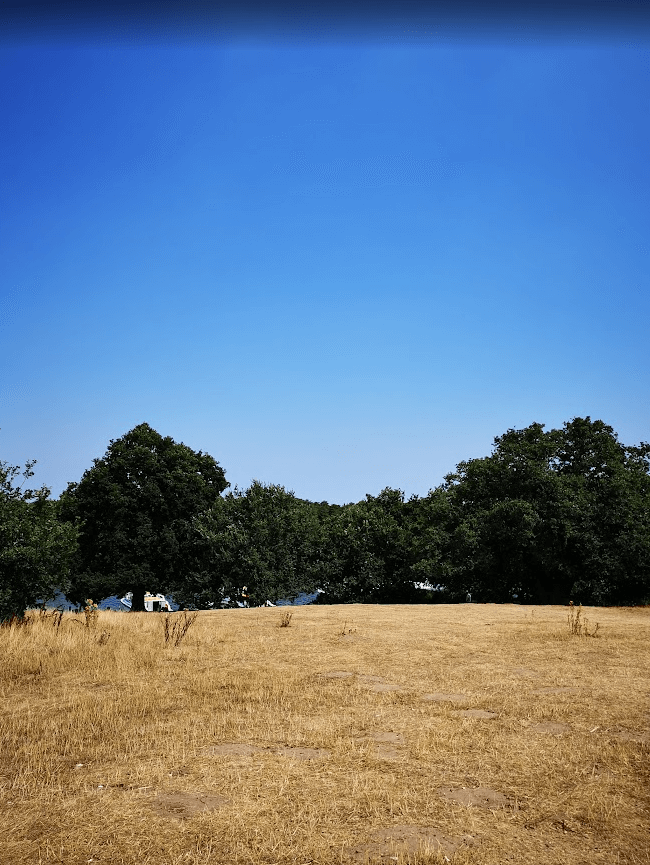
Salhouse Broad Dark Skies Hub (family stargazing in the Norfolk Broads)
A family-friendly pick on the Broads with an actual stargazing net you can lie on to watch meteor showers drift overhead. They host occasional astronomy evenings, and it’s an easy setting for first-timers.
We’ve found Salhouse a nice bridge between wild stargazing and accessibility. The broadside setting is atmospheric, and you’re close to classic Broads pubs such as the Fur & Feather Inn at Woodbastwick, home to Woodforde’s beers and a great roast lunch option to fuel an evening’s sightseeing..
Why it’s good: Purpose-built stargazing hub, easy access, great for families.
Practical: Pay-and-display by day; check site info for evening access and events.
Cley Beach stargazing and Northern Lights views
Shingle beach with a vast sea horizon and very little nearby lighting. Norfolk Wildlife Trust operates parking by the beach and at the visitor centre. Locals have captured aurora along this coastline when solar activity spikes..
If you’re planning a longer day, one option we’ve often suggested is pairing it with a stretch inland first. One of our circular dog-friendly walks nearby is ideal for daytime exploring before heading west for an evening under the stars. And for food, the Dun Cow at Salthouse is a favourite – both dog-friendly and a welcoming stop before or after heading down to the shingle.
Why it’s good: NWT management, very dark north-facing horizon, aurora sightings recorded.
Practical: Paid parking for non-members; free for NWT members. Sea breezes can be bracing.
Cart Gap, Happisburgh – coastal meteor shower viewing
A straightforward coastal option with a 97-space car park right by the RNLI station and public toilets. Excellent for meteor showers thanks to the open north-east horizon.
We’ve parked here for a day out, and the car park makes it easy for those wanting to stay later, and there’s something reassuring about being close to the lifeboat station. Smallsticks Café, just up from the car park, is handy for a late bite or a hot drink earlier in the evening – although it’s not open all week.
Why it’s good: Easy access, toilets onsite, wide horizons.
Practical: Charges apply 8am–6pm; no overnighting. Respect lifeboat operations and signage.
Waxham Beach – remote Norfolk stargazing
Waxham is one of the rawest stargazing spots in Norfolk – dark, quiet, and largely untouched by development. With no permanent lighting on the dunes and only minimal glow from nearby settlements, the night sky here feels properly unspoiled. That’s why it’s a favourite for astrophotographers.
There’s no regular public car park at the beach itself. Limited roadside parking is available near the church, and seasonal spaces may become available at Waxham Sands Holiday Park.
Why it’s good: Remote coastal location, very little light pollution, excellent for astrophotography.
Practical: Arrive early, park legally, and use a torch on sandy paths. No facilities nearby, so go prepared.
Walcott seafront stargazing with amenities nearby
Easy coastal access, village amenities, and a clear sea horizon. On a crisp, moonless night, it can produce fine meteor views, and it’s a shorter hop for many.
We’ve often paired a stargazing stop here with the Kingfisher fish & chip shop on the seafront – simple, but a fitting way to make an evening of it.
Why it’s good: Accessible village setting with food options, sea-facing horizon.
Practical: Public toilets nearby, straightforward parking along the seafront.
Mousehold Heath, Norwich – city stargazing option
If you’re based in Norwich and want a spontaneous look at a bright meteor shower or a planetary alignment, the high ground at St James’ Hill is the city’s go-to.
We’ve always thought there’s something romantic about this corner. Spread a picnic blanket, settle in under the trees, and you can watch the stars while still being within earshot of the city. The glow of Norwich and the passing cars are drawbacks if you’re chasing fainter stars, but for casual stargazing without driving far, St James’ Hill is a reliable choice.
Why it’s good: Elevated, accessible, and atmospheric for city residents.
Practical: Several nearby car parks; expect light spill and more people than remote sites.
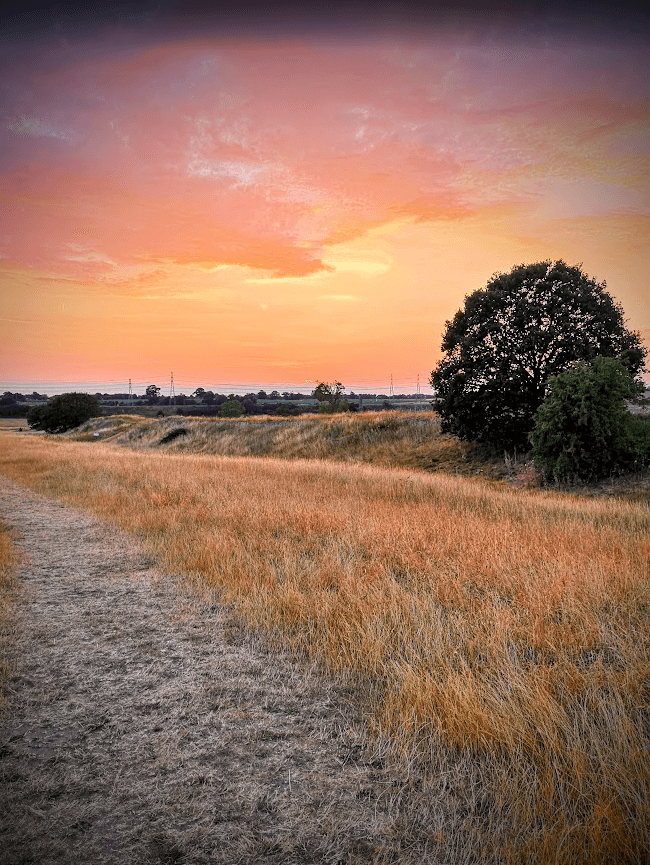
Bagpipe Corner, Caistor St Edmund – local favourite stargazing spot
This is one of those places you only really know about if you’ve lived nearby. Many locals affectionately call it Bagpipe Corner because a charming bloke sometimes stands on the corner above High Ash Farm, practising his piping in the early evenings. The name stuck, and it’s still used when people talk about good skies south of Norwich.
We’ve often used this spot ourselves for long, calm walks out under big skies, and it’s a great base for blackberry picking in Norfolk too! While there’s charged ANPR parking at the Venta Icenorum site, our recommendation is to pull up carefully on the corner or brow of Wash Lane, where there’s a small pull-off near some logs. This is the part most people mean when they talk about Bagpipe Corner.
You occasionally get a bit of added character before night falls – the chance sound of bagpipes, or one of the local coffee vans that sometimes parks up here. Once the sky darkens, it’s as peaceful as anywhere in Norfolk.
Why it’s good: Local tradition, quiet countryside skies, easy access for south Norfolk stargazers.
Practical: No facilities; park with care at the Wash Lane pull-off.
Breckland Astronomical Observatory, Great Ellingham – community telescope nights
For those who’d like guidance, the Breckland Astronomical Observatory is an incredible community resource and passion project brought into fruition by dedicated fundraisers and the donation by The University of Hertfordshire of its retired observation dome. Run by the Breckland Astronomical Society, it opens to the public on regular Friday nights and for special celestial events. You can look through large telescopes, get expert explanations from some of the most welcoming people we’ve ever met, and share the experience with others. Park up with dipped lights and walk carefully across the playing field, and you should see the observatory’s wite dome in the distance. Full details, open nights, and membership info are listed at brecklandastro.org.uk.
Why it’s good: DSDS recognition, community atmosphere, telescopes on hand.
Practical: Check the events calendar before travelling; small entry fee for non-members.

When to see meteor showers and Northern Lights in Norfolk
- Perseids peak around 12–13 August; warm nights and fast meteors make them ideal.
- Geminids peak 13–14 December; colder but prolific.
- Northern Lights have been seen across Norfolk’s coast during strong solar activity, including in 2024. Watch forecasts and head for a dark, north-facing beach.
Stargazing etiquette and safety in Norfolk
- Keep noise down, especially near villages and reserves.
- Shield torches and car interiors. Use red light if possible.
- On beaches, check tide times and avoid soft shingle slopes in the dark.
- Take litter home and leave wildlife undisturbed.
FAQs about stargazing in Norfolk
Where is the best place to stargaze in Norfolk?
For consistent darkness with amenities, Kelling Heath and Wiveton Downs are both official Dark Sky Discovery Sites.
Can you see the Northern Lights from Norfolk?
Yes, occasionally during strong solar storms. Head for a dark, north-facing beach such as Cley or Waxham.
Do I need special equipment?
No. Your eyes are enough for meteors, the Milky Way and constellations. Binoculars are a great next step, and local societies run telescope nights.
Is parking available at night?
Many coastal car parks are open 24 hours and free after 6pm, though overnight sleeping isn’t permitted. Always check local signage.
| Location | Why It’s Good for Stargazing |
|---|---|
| Kelling Heath (DSDS) | Flagship Norfolk dark sky site, facilities and regular astronomy events |
| Wiveton Downs (DSDS) | Elevated heathland with official dark sky status and wide horizons |
| RSPB Titchwell Marsh | 360° horizons over marsh and sea, recognised by Norfolk Coast Partnership |
| Barrow Common | Quiet elevated heath with minimal light pollution |
| Salhouse Broad | Family-friendly stargazing hub with rope nets and events |
| Cley Beach | Shingle beach, aurora sightings, Norfolk Wildlife Trust managed |
| Cart Gap | Easy-access coastal car park, great for meteor showers |
| Waxham | Remote, very dark coastal skies ideal for astrophotography |
| Walcott | Seafront village location with food options nearby |
| Mousehold Heath | Accessible city option with romantic hilltop views |
| Bagpipe Corner | Local favourite with unique history and quiet countryside skies |
| Breckland Observatory | Community-led site with telescopes and public events |

